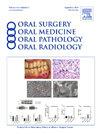Local anesthesia nerve block for managing burning mouth syndrome: a scoping review
IF 2
3区 医学
Q2 DENTISTRY, ORAL SURGERY & MEDICINE
Oral Surgery Oral Medicine Oral Pathology Oral Radiology
Pub Date : 2024-07-22
DOI:10.1016/j.oooo.2024.07.007
引用次数: 0
Abstract
Objective
To assess the clinical scenarios in which nerve blocks are employed in the context of burning mouth syndrome (BMS).
Study Design
This scoping review followed the PRISMA-ScR. A protocol was generated on Open Science Framework. Electronic searches were performed in the following databases: PubMed, Scopus, EMBASE, Web of Science, LILACS, and Cochrane, in addition to the grey literature and citations from Grémeau-Richard et al. (2010).
Results
Nerve blocks were used for treatment purposes in all cases. The mandibular nerve and the stellate ganglion were both blocked in 50% studies, while the maxillary nerve and lingual nerve were blocked in 25% study each. The anesthetics used were lidocaine (50%) and bupivacaine (50%). Relief was generally reported after immediate block, and at a mean follow-up of 4.5 weeks, there was considerable improvement compared to the initial conditions when the mandibular and/or maxillary nerve were targeted.
Conclusions
The use of nerve blocks has been employed in the treatment of patients with refractory BMS. Clinical studies with standardized methodology are necessary to validate and understand the potential role of mandibular and maxillary nerve block in this setting.
局部麻醉神经阻滞治疗烧灼口腔综合征:范围综述
评估烧灼口腔综合征(BMS)中使用神经阻滞的临床情况。本范围界定综述遵循 PRISMA-ScR。在 "开放科学框架"(Open Science Framework)上生成了一份协议。在以下数据库中进行了电子检索:PubMed、Scopus、EMBASE、Web of Science、LILACS 和 Cochrane,以及灰色文献和 Grémeau-Richard 等人(2010 年)的引文。所有病例均采用神经阻滞治疗。50%的研究对下颌神经和星状神经节均进行了阻滞,而上颌神经和舌神经阻滞的研究各占25%。使用的麻醉剂为利多卡因(50%)和布比卡因(50%)。据报道,立即阻滞后症状普遍得到缓解,在平均 4.5 周的随访中,与针对下颌神经和/或上颌神经的初始条件相比,症状有了显著改善。神经阻滞已被用于治疗难治性 BMS 患者。为了验证和了解下颌和上颌神经阻滞在这种情况下的潜在作用,有必要采用标准化方法进行临床研究。
本文章由计算机程序翻译,如有差异,请以英文原文为准。
求助全文
约1分钟内获得全文
求助全文
来源期刊

Oral Surgery Oral Medicine Oral Pathology Oral Radiology
DENTISTRY, ORAL SURGERY & MEDICINE-
CiteScore
3.80
自引率
6.90%
发文量
1217
审稿时长
2-4 weeks
期刊介绍:
Oral Surgery, Oral Medicine, Oral Pathology and Oral Radiology is required reading for anyone in the fields of oral surgery, oral medicine, oral pathology, oral radiology or advanced general practice dentistry. It is the only major dental journal that provides a practical and complete overview of the medical and surgical techniques of dental practice in four areas. Topics covered include such current issues as dental implants, treatment of HIV-infected patients, and evaluation and treatment of TMJ disorders. The official publication for nine societies, the Journal is recommended for initial purchase in the Brandon Hill study, Selected List of Books and Journals for the Small Medical Library.
 求助内容:
求助内容: 应助结果提醒方式:
应助结果提醒方式:


